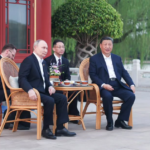IN the 1980s, the Indian public got to know of two sets of strange offshore entities that were based in global tax havens. One set included names such as Lotus, Tulip, and Mont Blanc that were located in Switzerland, Panama, and Lichtenstein, respectively. The other set comprised Crocodile Investments and Fiasco Investments that were headquartered in the Isle of Man. The first group was allegedly involved in the payments of bribes and commissions in the controversial Bofors case. The second played a dubious role in stock speculations in the Indian bourses.
The transactions of these companies established the role they played in the movement of money to favour specific individuals, which included agents and middlemen, industrialists, and politicians. But more importantly, the deals proved two things—one that was evident, and the other that was counterintuitive, i.e. contrary to common sense expectations. In Bofors, it was clear, yet again, that Indians use tax havens as hiding places for illegal money. But in the cases of Crocodile and Fiasco, it hinted that Indians are possibly bringing back the illicit money that was stashed abroad.
During the 1990s and 2000s, these trends accelerated, but became intertwined. In essence, the illegal capital flight out of the country intensified, largely to tax havens, but the money wasn’t parked there as was the case in the 1970s and 1980s. In fact, the black money was promptly re-routed through normal banking channels to invest in India—either as foreign direct investment, non-resident Indians’ investment, or as foreign money that was used to buy Indian stocks. The black money was washed as white, and used to earn attractive re-turns in the post-reforms India.
Data from the Swiss authorities, for example, adds credence to this re-routing of the ill-gotten money back to India. In 2019, the Swiss National Bank revealed that Indians (which did not include the money they held in foreign names and non-Indian entities) held less than Rs. 7,000 crore in its country’s banks. The highest ever was in 2006—Rs. 23,000 crore. This was way short of the various claims and estimates. One said that Indians held over a trillion dollars, more than Rs. 700,000 crore at today’s exchange rate, in Swiss banks.
Another way to analyse the situation is to look at the figures that became public due to the leaks by financial whistle blowers. A few years ago, an ex-engineer at the global bank, HSBC, shared details of over 100,000 bank accounts with the media. These included almost 1,200 Indians, who held Rs. 25,420 crore in illegal accounts, i.e. just over Rs. 20 crore or less than $3 million at the current exchange rate. The same was true about the latest revelations that were dubbed The Panama Papers and The Paradise Papers.
In their book, The Panama Papers, the three Indian Express journalists, who exposed the offshore scandal, say that the government sleuths found that the 500 named Indians held undisclosed assets of just over Rs. 1,100 crore. This comes to an average of Rs. 2 crore per individual or entity. And this is the biggest problem with the book, which misses the woods for the trees. The three journalists ask the wrong questions, or rather the not-so-right ones, and go ahead with vigour and enthusiasm to answer them.
During the 1990s and 2000s… the illegal capital flight out of the country intensified, largely to tax havens, but the money wasn’t parked there as was the case in the 1970s and 1980s. In fact, the black money was promptly re-routed through normal banking channels to invest in India

Instead of a sharp focus on why Indians hold so less money in the offshore entities, they take a deep dive into the specific names. The journey, or the efforts and challenges to trace the beneficiaries and owners of the offshore accounts, becomes the main narrative. The journalists, in effect, become the protagonists, rather than what was openly visible. In fact, the authors breezily mention that they find no names of Indian politicians because the latter are able to hide their identities even in offshore accounts.
In the seminal Vodafone case, the Supreme Court explored the issue of whether a foreign owner, who takes over an Indian company through cross-border investments and through offshore entities, is liable to pay tax deducted at source on capital gains of the seller. In its 2012 order, the apex court said no and ruled in favour of Vodafone’s acquisition of an Indian telecom firm

THE question should have propped up because the authors mention other instances where the efforts to trace black money failed miserably. Under a one-time voluntary disclosure of foreign assets in 2015, “648 declarations involving undisclosed foreign assets worth over Rs. 4,100 crore were made”. This is over Rs. 6 crore per disclosure. In 2016, the government gave the option for Indian assets. “At the end, there were 71,726 declarations disclosing Rs. 67,382 crore”, says the book, or less than Rs. 1 crore per declaration.
Unfortunately, the authors implicitly knew the answers, but failed to develop them or deal with them. In the book, they mention about how money stashed abroad is re-routed through tax havens like Mauritius back to the country. They mention jargons and phrases like round tripping and treaty shopping to hint at such trends. And then they keep quiet about it, and get self-obsessed with their efforts and revelations. The fact that offshore entities were registered, whether they had money or not, was enough for them.

Fortunately, there are several case studies, and anecdotal and actual evidence to emphasise that Indians now prefer to bring back their ill-gotten wealth through legal banking channels. They choose tax havens for both purposes, to avoid taxes and maintains secrecy so that no one can trace the sources of the incoming money. It is now time to deal with some of these cases and trends.
Once Rajiv Gandhi opened the Indian investment floodgates through imports of components and joint ventures with foreign partners, Indians could bring back the black money as direct equity or convertible debentures like GDR (global depository receipts) issued in global stock exchanges. They could also show them as equity investments made by NRIs and private parties in overseas joint ventures that were set by Indian industrialists. Given the boom in the Indian economy, especially after 1991, the returns on equity due to shooting valuations were mouth-watering.
IN the seminal Vodafone case, the Supreme Court explored the issue of whether a foreign owner, who takes over an Indian company through cross-border investments and through offshore entities, is liable to pay tax deducted at source on capital gains of the seller. In its 2012 order, the apex court said no and ruled in favour of Vodafone’s acquisition of an Indian telecom firm. What’s significant is the 2007 ownership structure of how various foreign and Indian entities owned the Indian operational arms in this case.

Vodafone’s ownership structure was completely reproduced in the SC order, which we have republished. It will come as a shocker to most readers. It shows a maze of more than five-dozen companies, most of them based in tax havens like Mauritius, through which the various partners held their stakes. What is of interest is that some of the Indian partners, like the Mumbai-based Essar group, which sold a majority stake (and later the complete stake) to Vodafone, also held its minority stake through entities based in Mauritius.
For example, the SC observes, “On 15.03.2007, a Term Sheet Agreement between VIH (Vodafone) and Essar Teleholdings Limited, an Indian company which held 11% in HEL (the sold company), and Essar Communications Limited, a Mauritius company which held 22% in HEL, was entered into for regulating the affairs of HEL and the relationship of the shareholders of HEL.” After the Vodafone deal, Essar held 33% in the Indian operational arm; it sold it later when 100% FDI was allowed in the telecom sector.

While Essar’s money that came through Mauritius was legal, the experts and Indian tax authorities found hundreds of similar cases where Indian entities held stakes in Indian companies through entities in tax havens. Mauritius became the most favourable investment base for direct investments in companies’ equity, and indirectly through purchases in the Indian stock exchanges. Indian and foreign entrepreneurs took advantage of the double taxation treaty between India and Mauritius, and the several loopholes in it, to avoid taxes, and keep their investments secret.
When Indians re-routed their money back to the country through tax havens, the officials dubbed it as “round tripping” for obvious rea-sons, and “treaty shopping” for not-so-obvious ones. The latter term implies that an investor from a third country uses the bilateral double taxation agreement between two nations, only to either avoid taxes or lower them. In tax havens, the tax rates are either zero or extremely low. Now, there are ways to lower instances of treaty shopping through rules that restrict the treaty’s tax benefits.
After the leaks of the Panama Papers, India did change its rules to make tax havens less attractive to the global business community. The new rules said that if “the place of effective management” of a company is in India, it is liable to pay taxes as per Indian laws, and not be able to take advantage of double taxation treaty with a tax haven like Mauritius

AT this stage it needs to emphasised, especially to clear the dark clouds of doubts created by The Panama Papers, that bulk of the money invested through the tax havens is legitimate. Avoidance of tax, unlike evasion, is legal, and is a regular feature of tax strategies of large, medium, and small corporations across the world. In fact, Singapore, and earlier London, were known tax havens. In the US, the states of New Jersey and Delaware act as onshore tax havens. To give one example, top Indian private firms remained zero-tax for decades until the introduction of minimum alternate tax.
In such cases, the spirit of the law, rather than its letter, is crucial. If an entity in a tax haven is merely used for tax purposes, and serves no other purpose, there is a violation of the spirit. But the fact remains that the two countries deliberately, and with consciousness signed a double taxation agreement. Both knew the differences in tax rates in their respective nations, and that businessmen can use it to their ad-vantages. It is for the authorities to prove their cases, or plug the loopholes. Not the other way around.
P-Notes, or participatory notes, are another controversial source of investment in Indian stocks. It is a paper, or a financial instrument, which is issued by foreign portfolio investors that are registered with the Indian market regulator, SEBI. The holders of the P-Notes, however, can invest in Indian stocks through registered foreign investors without disclosing their details under the Indian KYC norms
After the leaks of the Panama Papers, India did change its rules to make tax havens less attractive to the global business community. The new rules said that if “the place of effective management” of a company is in India, it is liable to pay taxes as per Indian laws, and not be able to take advantage of double taxation treaty with a tax haven like Mauritius. To think that this came into effect five years after the SC order in the Vodafone case points the needle of suspicion at the policy makers, not the businessmen.
ANOTHER misconception that most people make, and the authors of the book on Panama Papers also do, is to confuse secrecy with the aim to merely hide the source of undisclosed and illegal money. This is not so in most cases. Secrecy is crucial for corporations in several cases, especially during cross-border takeovers and M&As. This is especially true in the instances of hostile takeovers. Thus, the use of entities in tax havens plays an important role in business strategies. Obviously, tax avoidance is paramount.
Obviously, secrecy, as well as speed, in such matters, forces companies to use “shelf” companies, and not “shell’ companies, as the former are often confused with the latter. A shelf company can also be a shell company, and vice versa. The difference, as the Panama Papers conclusively proves, and which the authors completely missed, was that shelf companies are those that are already legitimately registered in tax havens, and are offered to global buyers on a plate, and most instantly, if they wish to become the owners.
Thus, the new owners of these shelf firms do not have to waste time to conduct their secret deals and transactions. They can do it immediately with the help of financial experts and chartered accountants, who have mastered the art and science of tax havens. A shelf company can be a shell company, i.e. it is used for only one specific purpose of tax avoidance. But shelf companies are invariably used for several deals, as the global cases in Panama Papers prove. In such instances, they cannot be dubbed as shell companies.

Hence, it is banal and immature for anyone to expect the business community to behave in a moral manner. It can only be expected to follow the laws, and routinely find gaps in them to skirt them. In fact, this is the cruel reality of business. This is why the analysis of The Panama Papers seems bombastic and moralistic. “Unsurprisingly, many offshore companies are ‘sham’ entities engaged in tax evasion/avoidance, manipulation of the market, money laundering, round tripping, parking black money, bribery, etc.”
However, in the Indian cases revealed in the Panama Papers, those that were dated before 2013 were totally illegal. This is because Indian rules did not allow investment in offshore accounts and offshore entities up to that year. It was only in 2013 that the rules were changed a bit. Hence, the revelations of the Panama Papers did serve a legal, and not moral, purpose.
Now, it is time to talk about two other ways in which Indians used the money stashed abroad to bring it back into the country’s stock markets. One of these, as we mentioned earlier, is GDR, or instruments that are issued in the European stock exchanges, and which are converted into shares of specific Indian companies. Several years ago, in the Jagatjit Industries; family fight over the business empire between the patriarch’s siblings, the GDR veil was lifted as per the evidence produced in the courts.

This author wrote a detailed piece, which said that the patriarch’s personal wealth included the control over entities like Higro Trading and Orissa Holdings, which were registered in a tax haven, British Virgin Islands. “While Higro holds 1.23 million GDRs of JIL (Jagatjit Industries Ltd)—equivalent to 25.1 million shares—Orissa Holdings controls GDRs equivalent to one million JIL shares.” In affidavits, it was said that the patriarch controlled these offshore firms. The managers of the firms took direct orders from the latter.
Researchers in several cases, and according to several papers and studies, found common Indian names of global offshore entities that held huge funds, and invested in Indian GDRs as well as ADRs (American depository receipts) that are issued in the US stock exchanges by Indian companies. Both GDRs and ADRs are similar as financial instrument, and are both converted into shares at fixed dates. However, as is expected, the Indian authorities made little efforts to trace the owners of these funds.

P-Notes, or participatory notes, are another controversial source of investment in Indian stocks. It is a paper, or a financial instrument, which is issued by foreign portfolio investors that are registered with the Indian market regulator, SEBI. The holders of the P-Notes, however, can invest in Indian stocks through registered foreign investors without disclosing their details under the Indian KYC norms. It is to maintain secrecy, which is crucial for the global hedge funds that operate in the dark world of instant and several legal speculations, as well as manipulations in some cases.
Indian authorities claim that P-Notes are fashionable with Indian investors, who wish to bring back the money stashed abroad. In fact, gunrunners, smugglers, and narcotics dealers use them to launder their money legally in lucrative investments. For the past three decades, India offered one of the best annual returns in stocks, and on a regular basis. Hence, the Indian officials feel that dishonest money comes in through these notes. But most attempts to tighten the norms on P-Notes failed, or fell below expectations.
ONE of the reasons is obvious: as the governments stepped in to control P-Notes the Indian markets crashed as money instantly flew out due to fear, apprehension, and panic. Only in recent times, India imposed a few curbs on P-Notes. But the savvy investors, like smart and suave entrepreneurs, invariably find a way to skirt the laws. As we mentioned earlier, most tend to comply with the letter of the laws, and do not care about their spirit.
On the whole, capital flight today, unlike in the past, is a complex phenomenon. So is the use of offshore entities, offshore accounts, and tax havens. Hence, the financial theatre is divided amongst two contentious sides—one, which claims that tax havens are storehouses of illegalities and criminalities, and the other that says that they serve useful purposes for global business but need to be monitored more effectively. It is for the policy makers to make the correct changes, and make them continuously, to keep pace with the dishonest. To paint everyone with a single brush is fruitless.
Alam Srinivas is a business journalist with almost four decades of experience and has written for the Times of India, bbc.com, India Today, Outlook, and San Jose Mercury News. He has written Storms in the Sea Wind, IPL and Inside Story, Women of Vision (Nine Business Leaders in Conversation with Alam Srinivas),Cricket Czars: Two Men Who Changed the Gentleman's Game, The Indian Consumer: One Billion Myths, One Billion Realities . He can be reached at editor@gfilesindia.com




























































